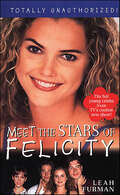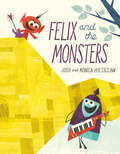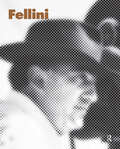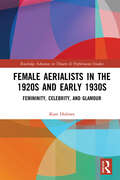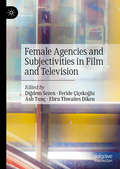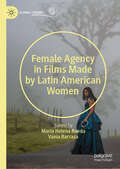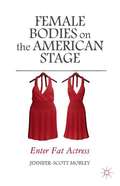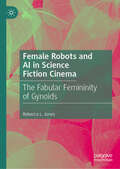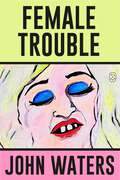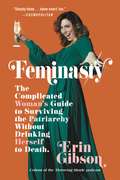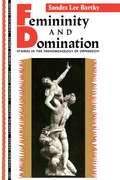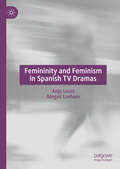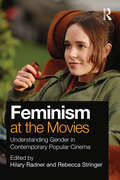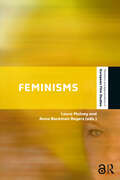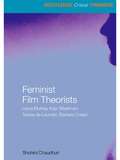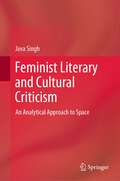- Table View
- List View
Felicity: Meet the Stars
by Leah FurmanThe fabulous foursome from TV's FelicityKeri Russell, stars as FelicityScott Speedman plays BenScott Foley portrays NoelAmy Jo Johnson plays JulieHow do these gifted actors feel about the characters they play? Are they similar to them in any way? What are their lives like on and off the set of TV's hottest show? Find out the real story of Felicity's hot young stars.
Felix and the Monsters
by Josh Holtsclaw Monica HoltsclawA lonely guard and his beloved keytar headline this timely, humorous look at the walls we create, what they mean, and why they might need to come down.Felix's job is to help guard the wall that protects everyone from the horrible monsters on the other side. But it's a boring job--nothing ever happens at the wall, so he spends his time dreaming of playing his keytar in a band. One day, Felix hears music coming from the other side of the wall, and sets out to investigate. What he discovers will knock some sense into him and show him and the other guards a better way to deal with the unknown. Let the music begin!
Fellini
by Jaap Guldemond Marente Bloemheuvel Sam StourdzéThere is no end. There is no beginning. There is only the infinite passion of life. This beautifully designed volume taps into the sources of Federico Fellini's baroque imagination bringing the power of his work into the limelight, and providing new insights into the dazzling talent of the man behind La Strada, La Dolce Vita and 8&‚. Fellini's career spanned forty years and made him perhaps the most illustrious of all the Italian filmmakers. Twenty years after Fellini's death, the author tells the story of the director's themes and obsessions through movie stills, set photos, posters and his own drawings. The book is organised in four parts. Popular Culture concentrates on Fellini's engagement with the popular culture of the time. Fellini at Work shows the director on the set. The City of Women concerns Fellini's most important subject and obsession: Woman, in all her many guises. Finally, Biographical Imagination presents his various doppelgangers, each reflecting a different aspect of his personality, with particular focus on his 'Book of Dreams'. Packed with images and quotes, this visually stunning book offers a magical journey through Fellini's compelling universe.
Female Aerialists in the 1920s and Early 1930s: Femininity, Celebrity, and Glamour (Routledge Advances in Theatre & Performance Studies)
by Kate HolmesFemale solo aerialists of the 1920s and early 1930s were internationally popular performers in the largest live performance mass entertainment of the period in the UK and USA. Yet these aerialists and this period in circus history have been largely forgotten despite the iconic image of ‘the’ female aerialist still flaring in the popular imagination. Kate Holmes uses insights gained as a practitioner to reconstruct in detail the British and American performances and public personae of key stars such as Lillian Leitzel, Luisita Leers, and the Flying Codonas, revealing what is performed and implicit in today’s practice. Using a wealth of original sources, this book considers the forgotten stars whose legacy of the cultural image of the female aerialist echoes. Locating performers within wider cultural histories of sport, glamour, and gender, this book asks important questions about their stardom, including: Why were female aerialists so alluring when their muscularity challenged conservative ideals of femininity and how did they participate in change? What was it about their movements and the spaces they performed in that activated such strong audience responses? This book is vital reading for students and practitioners of aerial performance, circus, gender, popular performance, and performance studies.
Female Agencies and Subjectivities in Film and Television
by Ebru Thwaites Diken Feride Çiçekoğlu Diğdem Sezen Aslı TunçThis volume provides an overview of the landscape of mediated female agencies and subjectivities in the last decade. In three sections, the book covers the films of women directors, television shows featuring women in lead roles, and the representational struggles of women in cultural context, with a special focus on changes in the transformative power of narratives and images across genres and platforms. This collection derives from the editors’ multi-year experiences as scholars and practitioners in the field of film and television. It is an effort that aims to describe and understand female agencies and subjectivities across screen narratives, gather scholars from around the world to generate timely discussions, and inspire fellow researchers and practitioners of film and television.
Female Agency in Films Made by Latin American Women (Global Cinema)
by María Helena Rueda Vania BarrazaAt a time of growing relevance for women’s social and cultural movements in the Americas, Female Agency in Films Made by Latin American Women examines how the increased prominence of women in a directorial role translates into new paradigms of female agency in Latin American filmmaking. This volume bridges the two main tendencies that have characterized gender-studies approaches to the region’s cinema to date: first, the survey-based analysis of films made by women and second, the study of how female characters are treated on the screen—by female and male directors. Bringing together both scholarly trends, this volume explores the complex modalities of female agency developed in recent films directed by women in Latin America, through innovative aesthetic and discursive strategies. Moving beyond consideration of visibility or representation, a diverse body of contributors in this book look for expressions of agency in the films’ gaze, their affective depth, the forms of care they bring to the fore, how they highlight their characters’ desires and subjectivities, and the bodily and sensorial experiences they convey.
Female Bodies on the American
by Jennifer-Scott MobleyThe fat female body is a unique construction in American culture that has been understood in various ways during the twentieth and early twenty-first centuries. Analyzing post-WWII stage and screen performances, Mobley argues that the fat actress's body signals myriad cultural assumptions and suggests new ways of reading the body in performance.
Female Playwrights and Applied Intersectionality in Romanian Theater (Routledge Advances in Theatre & Performance Studies)
by Cătălina Florina FlorescuIn this collection, the author focuses on several contemporary Romanian female playwrights with residencies in Europe and the U.S.: Alexandra Badea, Carmen Francesca Banciu, Alexa Băcanu, Ana Sorina Corneanu, Mihaela Drăgan, Dr. Cătălina Florina Florescu, Dr. Mihaela Michailov, Dr. Domnica Rădulescu, Saviana Stănescu, and Dr. Elise Wilk. In their bold works, written by female playwrights who are academics, activists, and performers, we are invited to discover variations in the modus operandi of the dramatic language itself from metaphorical to matter-of-fact approaches. Furthermore, while all these playwrights speak Romanian, they also think and operate in various other languages, such as Romani, German, French, Italian, and American English. This book facilitates scholars and students to discover contemporary issues related to Romanian society as presented heavily from a feminine angle and to reveal intersectional issues as seen and applied to dramatic characters in a post-communist country from some authors who experienced communism firsthand. The book is also an invitation to reinvent how we teach dramatic literature by offering 20 interactive, exploratory activities.
Female Robots and AI in Science Fiction Cinema: The Fabular Femininity of Gynoids
by Rebecca L. JonesThis book is the first comprehensive overview of the history of female-presenting AI and robots in US and UK live-action, science fiction films from 1949 to 2023. It offers an original taxonomy that aids in the examination of 80 films and over 135 characters&’ representations, starting with The Perfect Woman (1949) and ending with Robots (2023). Using its representational taxonomy, this book analyses the evolution of these depictions, showing the continuations, revisions, and shifts in the depiction of female-presenting AI and robots from objectified, eroticised, subordinated things to being autonomous moral agents who assert their right to equality and refuse their abusive, typically sexual, use. This book shows how these fictional, gendered constructions are products of a heterosexual, cisgender, male fantasy of an idealised, subordinated form of femininity. These artificial characters, along with their real-world counterparts, highlight a desire for a subordinated femininity, but also show how that subordination is a social construction often reinforced and countered in onscreen depictions. By examining the trends within its asserted Galatea, Girlfriend, Mother, and Deadly Seductress types, this book presents an exploration of what our female-presenting artificial creations could be, while addressing their contemporary, and our current, AI technologies, and how science fiction is influencing real life, while our reality seeks to mirror science fiction.
Female Trouble: A Screenplay
by John Waters“Burroughs famously dubbed Waters the Pope of Trash. Female Trouble, we might say, is his Summa Trashologica.”—Ed Halter, The Criterion CollectionIt all goes to hell when Baltimore bad girl Dawn Davenport doesn’t get the cha-cha heels she’s been demanding for Christmas. In this hilarious, irreverent, pyrotechnic melee of high-trash hijinks, Dawn ruins Christmas, skips town, and embarks on a wild ride that involves hitchhiking, robbery, murder, pregnancy—and, of course, modeling and glamour, too. The second installment of John Waters’ classic Trash Trilogy, Female Trouble explodes conventional norms of good behavior (and art) and is all the proof you’ll ever need that sometimes being bad can feel so, so very good.
Females in the Frame: Women, Art, and Crime
by Penelope JacksonThis book explores the untold history of women, art, and crime. It has long been widely accepted that women have not played an active role in the art crime world, or if they have, it has been the part of the victim or peacemaker. Women, Art, and Crime overturns this understanding, as it investigates the female criminals who have destroyed, vandalised, stolen, and forged art, as well as those who have conned clients and committed white-collar crimes in their professional occupations in museums, libraries, and galleries. Whether prompted by a desire for revenge, for money, the instinct to protect a loved one, or simply as an act of quality control, this book delves into the various motivations and circumstances of women art criminals from a wide range of countries, including the UK, the USA, New Zealand, Romania, Germany, and France. Through a consideration of how we have come to perceive art crime and the gendered language associated with its documentation, this pioneering study questions why women have been left out of the discourse to date and how, by looking specifically at women, we can gain a more complete picture of art crime history.
Feminasty: The Complicated Woman's Guide to Surviving the Patriarchy Without Drinking Herself to Death
by Erin GibsonFrom the wickedly famous and feminist creator and host of the "Throwing Shade" podcast, a collection of hilarious personal essays and political commentary perfect for fans of Lindy West and Roxane Gay. Since women earned the right to vote a little under one hundred years ago, our progress hasn't been the Olympic sprint toward gender equality first wave feminists hoped for, but more of a slow, elderly mall walk (with frequent stops to Cinnabon) over the four hundred million hurdles we still face. Some of these obstacles are obvious-unequal pay, under-representation in government, reproductive restrictions, lack of floor-length mirrors in hotel rooms. But a lot of them are harder to identify. They're the white noise of oppression that we've accepted as lady business as usual, and the patriarchy wants to keep it that way.Erin Gibson has a singular goal-to create a utopian future where women are recognized as humans. In FEMINASTY-titled after her nickname on the hit podcast "Throwing Shade"-she has written a collection of make-you-laugh-until-you-cry essays that expose the hidden rules that make life as a woman unnecessarily hard and deconstructs them in a way that's bold, provocative and hilarious. Whether it's shaming women for having their periods, allowing them into STEM fields but never treating them like they truly belong, or dictating strict rules for how they should dress in every situation, Erin breaks down the organized chaos of old fashioned sexism, intentional and otherwise, that systemically keeps women down.
Femininity and Domination: Studies in the Phenomenology of Oppression
by Sandra Lee BartkyBartky draws on the experience of daily life to unmask the many disguises by which intimations of inferiority are visited upon women. She critiques both the male bias of current theory and the debilitating dominion held by notions of "proper femininity" over women and their bodies in patriarchal culture.
Femininity and Feminism in Spanish TV Dramas
by Anja Louis Abigail LoxhamRecent social and political events in Spain have prompted a resurgence of feminism in the Spanish public sphere. Popular culture intervenes in these debates, and television does so specifically through the dramas which foreground female stories and female subjects, in many cases redefining and interpreting key moments in the progression of national gender politics. This pioneering study maps these developing concerns onto a selection of TV dramas which centre on feminisms and female identities, and as such are key interlocutors in social change. Our intention is to mainstream Spanish television studies and, in our analysis of its innovative and varied approach to gender politics, to take it out of the ‘interpretative isolation ward’ (Smith 2006). This monograph fills a significant gap in the literature on transnational popular culture; it is ground-breaking in its interdisciplinarity (television, modern languages, gender studies) and is the first of its kind in English.
Feminism and Film (Oxford Readings in Feminism Series)
by E. Ann KaplanThis book brings together carefully selected essays on feminism and film with a view to tracing major developments in theory, criticism, and practices of women and cinema from 1973 to the present day. It illuminates the powerful, if controversial, role feminist research has played in the emergence of Film Studies as a discipline during these years; reprinting influential 1970s pioneering essays tracing the ensuing debates and challenges to key theories that shaped this field in the next two decades. Kaplan details the Euro-American contexts within which feminist film theories and practices emerged and traces the changing influences of French, German, and American intellectual movements on feminist film research. As well as a wide-ranging introduction which sets the selection of essays in context, readers will find examples of social-role, psychoanalytic, structuralist, post-structuralist, gay and lesbian, postmodern and postcolonial feminist film criticism, prefaced by introductory notes and including further readings.
Feminism and Theatre
by Sue-Ellen CaseThis classic study is both an introduction to, and an overview of, the relationship between feminism and theatre.
Feminism and the Western in Film and Television
by Mark E. WildermuthThis book works to complicate and push against common arguments that the Western from its inception is an anti-feminist genre. By focusing on representations of women professionals in Westerns, it shows that women in cinematic and televisual Westerns sometimes do acquire agency and empowerment in the private and public realms, despite our culture’s tendency to gender the former as feminine and the latter as solely masculine. The study reviews the relationship of these progressive Westerns to both explicit and latent feminist ideologies relevant to their times, as the films evolved from the 1930s to the twenty-first century.
Feminism at the Movies: Understanding Gender in Contemporary Popular Cinema
by Hilary Radner Rebecca StringerFeminism at the Movies: Understanding Gender in Contemporary Popular Cinema examines the way that contemporary film reflects today’s changing gender roles. The book offers a comprehensive overview of the central issues in feminist film criticism with analyses of over twenty popular contemporary films across a range of genres, such as chick flicks, teen pics, hommecoms, horror, action adventure, indie flicks, and women lawyer films. Contributors explore issues of femininity as well as masculinity, reflecting on the interface of popular cinema with gendered realities and feminist ideas. Topics include the gendered political economy of cinema, the female director as auteur, postfeminist fatherhood, consumer culture, depictions of professional women, transgender, sexuality, gendered violence, and the intersections of gender, race, and ethnic identities. The volume contains essays by following contributors: Taunya Lovell Banks, Heather Brook, Mridula Nath Chakraborty, Michael DeAngelis, Barry Keith Grant, Kelly Kessler, Hannah Hamad, Christina Lane (with Nicole Richter), JaneMaree Maher, David Hansen-Miller (with Rosalind Gill), Gary Needham, Sarah Projansky, Hilary Radner, Rob Schaap, Yael D Sherman, Michele Shreiber, Janet Staiger, Peter Stapleton, Rebecca Stringer, Yvonne Tasker, and Ewa Ziarek.
Feminism, Women's Agency, and Communication in Early Twentieth-Century China: The Case of the Huang-Lu Elopement (Chinese Literature and Culture in the World)
by Qiliang HeFeminism, Women’s Agency, and Communication in Early Twentieth-Century China focuses on a sensational elopement in the Yangzi Delta in the late 1920s to explore how middle- and lower-class members of society gained access to and appropriated otherwise alien and abstract enlightenment theories and idioms about love, marriage, and family. Via a network of communications that connected people of differing socioeconomic and educational backgrounds, non-elite women were empowered to display their new womanhood and thereby exercise their self-activating agency to mount resistance to China’s patriarchal system. Qiliang He’s text also investigates the proliferation of anti-feminist conservatisms in legal practice, scholarly discourses, media, and popular culture in the early Nanjing Decade (1927-1937). Utilizing a framework of interdisciplinary scholarship, this book traverses various fields such as legal history, women’s history, popular culture/media studies, and literary studies to explore urban discourse and communication in 1920s China.
Feminisms: Diversity, Difference and Multiplicity in Contemporary Film Cultures (The Key Debates: Mutations and Appropriations in European Film Studies)
by Laura Mulvey Anna Backman RogersThis collection brings together an exciting group of established and emerging scholars to consider the history of feminist film theory and new developments in the field and in film culture itself. Opening the field up to urgent questions and covering such topics as new experimental film, the digital image, consumerism, activism, and pornography, Feminisms will be essential reading for scholars of both film and feminism.
Feminist Film Studies
by Karen HollingerFeminist Film Studies is a readable, yet comprehensive textbook for introductory classes in feminist film theory and criticism. Karen Hollinger provides an accessible overview of women’s representation and involvement in film, complemented by analyses of key texts that illustrate major topics in the field. Key areas include: a brief history of the development of feminist film theory the theorization of the male gaze and the female spectator women in genre films and literary adaptations the female biopic feminism and avant-garde and documentary film women as auteurs lesbian representation women in Third Cinema. Each chapter includes a "Films in Focus" section, which analyzes key texts related to the chapter’s major topic, including examples from classical Hollywood, world cinema, and the contemporary period. This book provides students in both film and gender/women’s studies with a clear introduction to the field of feminist film theory and criticism.
Feminist Film Studies: Writing the Woman into Cinema
by Janet MccabeJanet McCabe is a lecturer in film studies at Trinity College, Dublin. She writes on feminist film theory and women's narrative/narration in quality American television.
Feminist Film Studies: Writing the Woman into Cinema (Short Cuts)
by Janet McCabeAn introduction to feminist film theory as a discourse from the early seventies to the present. McCabe traces the broad ranging theories produced by feminist film scholarship, from formalist readings and psychoanalytical approaches to debates initiated by cultural studies, race and queer theory.
Feminist Film Theorists: Laura Mulvey, Kaja Silverman, Teresa de Lauretis, Barbara Creed (Routledge Critical Thinkers)
by Shohini ChaudhuriFocusing on the ground-breaking work of Laura Mulvey, Kaja Silverman, Teresa de Lauretis and Barbara Creed, this book explores how, since it began in the 1970s, feminist film theory has revolutionized the way that films and their spectators can be understood. Examining the new and distinctive approaches of each of these thinkers, this book provides the most detailed account so far of their ideas. It illuminates the six key concepts and demonstrates their value as tools for film analysis: the male gaze the female voice technologies of gender queering desire the monstrous-feminine masculinity in crisis. Testing their ideas with a number of other examples from contemporary cinema and TV, Shohini Chaudhuri shows how these four thinkers construct their theories through their reading of films. An excellent study companion for all students of film theory and women’s studies.
Feminist Literary and Cultural Criticism: An Analytical Approach to Space
by Java SinghFeminist Literary and Cultural Criticism explores inter-disciplinary connections across Cultural Anthropology, Geography, Psychology, and feminist literary criticism to develop a theoretical framework for spatial criticism. Using the spatial gynocritics framework developed in the book, it analyzes selected texts from five different genres–short-story, novel, film, cartoons, and OTT series, created by women. The creators discussed in the book constitute a transnational collectivity of women that shares common concerns about gender, environment, technology, and social hierarchies. They comprise a geographically and linguistically diverse group from India, Uruguay, Spain, Argentina, and the USA. The book offers immense potential for a comparative study on numerous aspects, among which the present work concentrates on the treatment of Space, demonstrating that spatial logic and grammar are essential elements of the feminist praxis. The book reveals the unexamined potential in the women creators’ praxis of destabilizing, decentring, and destroying the ascribed centres around which social arrangements are structured. Moreover, the book offers valuable analytic tools that add to scholarship in literary theory, comparative cultural studies, comparative literature, gender studies, feminist criticism, and interdisciplinary humanities. It is an indispensable aid to students and faculty in these areas of study, enabling them to critique texts from a fresh perspective.
